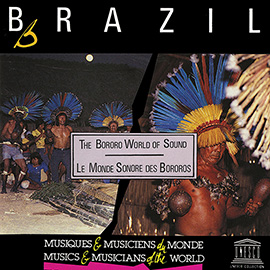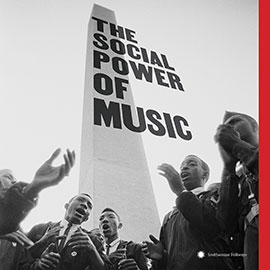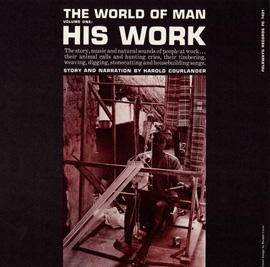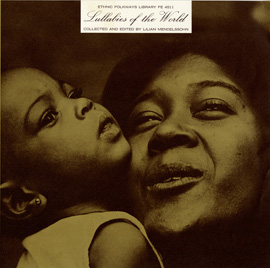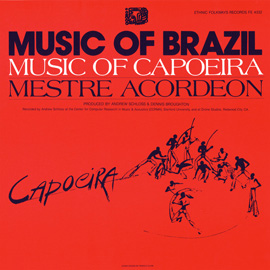Summary
Immerse yourself in the lively mood of Samba and Carimbo. Learn the basic steps and dance along with the music. Identify the instruments and play along with others. Learn about the relationships of Samba and Carimbo with other musics such as jazz and swing.
Suggested Grade Levels: 3-5, 6-8, 9-12
Country: Brazil
Region: South America
Culture Group: African Brazilian, Brazilian
Genre: Samba, Carimbó
Instruments: Maracas, Guitar, Agogô, Atabaque, Berimbau, Pandeiro, Reco-Reco, Male Voices, Transverse Flute, Carimbó, Onco, Ganzá
Language: Portuguese
Co-Curricular Areas: Social Studies, Dance
National Standards: 1, 2, 3, 6, 8, 9
Prerequisites: None
Objectives:
- Movement through Samba and Carimbó
- Playing instruments associated with the Samba and Carimbó
- Experiencing Brazilian music
Material:
- “Bambo du Bambú: Samba” performed by Ernesto dos Santos. Music of the World's Peoples: Vol. 3 (FW0406)
- Instruments: tambourine, agogo bells, guiro, various shakers, various drums (all optional)
- A large dance space would be ideal, however the samba can be danced in close quarters if necessary
- “Carimbó” performed by Conjunto Tapayoara from Music of Para, Brazil: Carimbó, Pajelança, Batuque & Umbanda (FW04346)
- Copy of the Disney movie “Saludos Amigos” (optional)
Lesson Segments:
- Samba: Brazil’s National Music (National Standards 1, 2, 6, 8, 9)
- Carimbó (National Standards 2, 3, 6, 8, 9)
- 1.
1. Samba: Brazil’s National Music
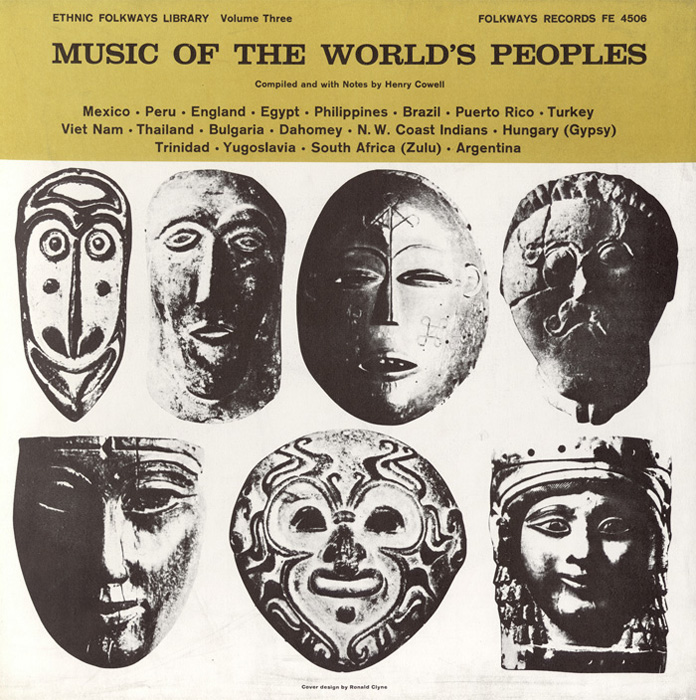
“Bambo du Bambú: Samba”
from Music of the World's Peoples: Vol. 3 (1955) | FW04506
- The word Samba refers to the genre and the dance. After listening to the recording a few times, dance the samba with “Bambo du Bambú”! A very basic version of samba can be danced with a quick-quick slow, quick-quick slow (or nq nq) rhythm. The basic samba step is as follows:

- Step forward with left foot
- Bring right foot next to the left, but don’t transfer weight completely. The ball of the foot should receive some pressure (enough to release the left foot a bit) so that both knees are slightly bent on the ‘&’ of beat 1
- Transfer all weight back to the left foot
- Repeat, starting with the right foot this time
- Don’t forget to stand up straight and move your hips!
- Dance the samba around the room, following your own path or following a friend
- Samba is danced both solo and in pairs
- If you choose to pair up, the dance hold is traditional style, and one partner must start with the left foot, one with the right
- “Bambo du Bambu”, (recorded by Ernesto dos Santos) in 1942 is an embolada sung with samba style rhythms and percussion.
- An embolada is a strophic song which is often comical and utilizes onomatopoeia and alliteration which, with a fast tempo, enhance the rhythm of the song
- Try to sing along with the chorus:
Oia bambo du bambubelê (bambú)
Oia bambo du bambubalá
Oia bambo du bambubelê
Quero ver dizer três vezes bambulá - Loose translation: look at the bamboo, look at the bamboo, look at the bamboo, I want to say three more times bamboo
- The rhythm of the lyrics would make an interesting percussion ensemble or speech piece
- Carnaval Samba may be the most famous variation of the genre, but samba has many facets.
- Nightclub singers, acoustic guitar players, alternative rock bands and electronica DJs also use samba in their performances
- Explore the diverse world of samba styles on the internet.
- Discuss similarities and differences in rhythm, form and instrument usage between styles
- Find three interesting and diverse styles of samba to play for your students
- During one class period, discuss the similarities and differences between the three pieces
- On another day, assess students on their listening (see rubric)
- Carnival samba is played by a percussion ensemble called a bateria, consisting of:
- Pandeiro (like a tambourine with a head)
- Agogô, Ganzá (like tambourine jingles on a rectangular frame)
- Reco-Reco (a scraper with metal springs)
- Caixa (like a snare drum, pronounced ‘cai-sha’)
- Cuíca (friction drum)
- Repinque (10”-12” two-headed drum played with one stick and a hand)
- Surdo(large two-headed drum played with hard or soft beater)
- Experiment with these samba rhythms on classroom instruments:

- The sixteenth notes in Samba are not quite straight.
- The second of each group of four is played slightly later, giving the rhythm a bit of a swing or suingue as it’s known in samba schools
- Walt Disney’s 1942 trip to Brazil sparked a love for Brazilian music in the entertainment magnate, and was this trip that inspired Disney to include a Brazilian character, “José Carioca” and samba music in several cartoon movies.
- “Saludos Amigos” (“Hello Friends”), released in 1943, features Donald Duck and Jose listening to, playing, and dancing the samba to Ari Barroso’s “Aquarela do Brasil” (“Watercolor of Brazil”), one of the best known and most recorded sambas
- Find a copy of this movie and watch the Samba section with your class; the instruments, rhythms and dance are showcased beautifully
- Samba and jazz have many parallel features.
- Both began as a fusion of African and European musics
- Both thrived in a point in history where urban and rural cultures were beginning to blend, and recording technology made possible wide distribution
- Both were initially subject to criticism, and later celebrated as symbols of national identity
- Both involve a strong pulse, layers of rhythms, and improvisation
- Both originated in poorer communities, and have become globally popular
- Both samba and jazz refer to families of styles, not a single style.
**Consider including samba in a unit about jazz (or jazz in your samba unit) and leading a class or small group discussion about these similarities and differences.
Assessment:
|
Assessment |
Basic Level |
Proficient Level |
Advanced Level |
|
Dancing the Samba
|
The student cannot keep a steady beat and the rhythm is not accurate.
|
The student is able to dance the simple samba alone.
|
The student is able to dance the simple samba with a partner.
|
|
National Standard #2: Playing samba rhythms on classroom instruments
|
The student cannot keep a steady beat and the rhythm is not accurate, but the student finishes with the group.
|
The student is able to perform one of the samba parts correctly, with the steady beat.
|
The student is able to perform two or more of the samba rhythms correctly, with the steady beat; and teach them to other students.
|
|
National Standard #9:
The student is asked to describe or explain how (1) pitch or melody (2) rhythm or tempo (3) harmony or texture (4) voices or instruments (5) form or structure are used in three brief recorded examples of Samba music |
1. The student can describe or explain the use of two of the five categories of characteristics in one of the examples.
2. The student's answers are essentially correct but superficial or incomplete. |
1. The student can describe or explain the use of three of the five categories of characteristics in two of the examples.
2. The student's answers are accurate and complete. |
1. The student can describe or explain the use of four of the five categories of characteristics in all three of the examples.
2. The student's answers are accurate and complete. |
2. Carimbó
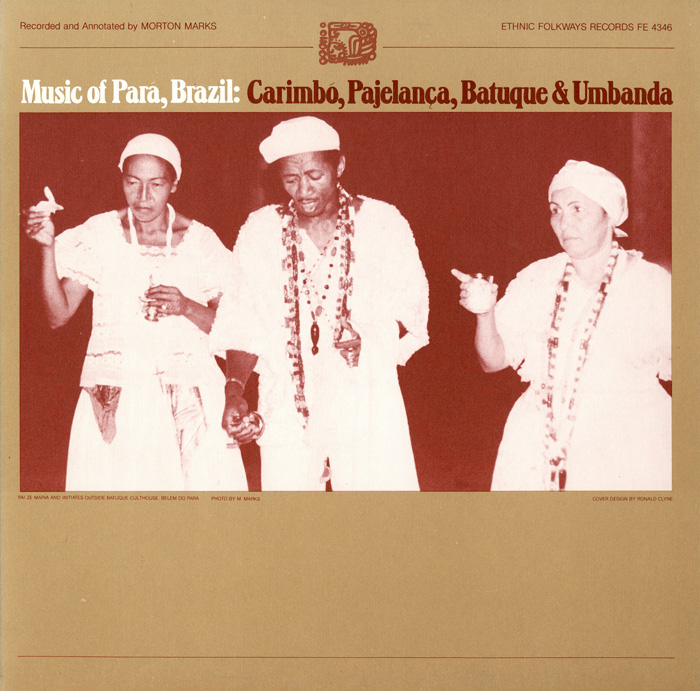
“Carimbó”
from Music of Para, Brazil: Carimbó, Pajelança, Batuque and Umbanda (1982) | FW04346
- Carimbó is the name of a drum, a style of music, and a style of dance.
- Carimbó music and dance has its origins in Belem, a city in the state of Para
- The dance, music, and drum are clearly African Brazilian in origin, as well as influenced by some of the indigenous Amazon tribes present in Para

- In the recording you may hear:
- onca (a friction drum present in many different Brazilian music genres)
- Two Carimbó
- A reco-reco (scraper with metal springs)
- Two rattles
- A ganza (metal shaker)
- A cavaquinho (plucked lute)
- A banjo
- A transverse flute
- Carimbó dancing has a step similar to the Samba.
- In Carimbó, however, women wear long, flowing skirts, and they spend much of the dance twirling around
- At some point during the dance, the woman will drop her handkerchief and the man must pick it up using only his teeth
- Listen to the recording.
- Do you hear the instruments mentioned above?

- Tap the pulse while you listen again
- Are there similarities between the samba you heard earlier and the Carimbó?
- Carimbó dancers usually stand in a ring and will then take turns dancing either solo or in pairs in the ring.
- Sometimes they will imitate other people, animals or birds in their dances
- Experiment with this type of ring dance to the recording of “Carimbó” in your classroom
- As solo dancers improvise in the ring, the outside dancers may snap, imitating castanets, as Carimbó dancers often snap during a dance
- Put together your own Carimbó-like ensemble to accompany the dancers.
- Low pitched drums playing the steady beat
- Shakers and scrapers playing sixteenth notes
- Add recorders and/or bar instruments if you would like, either learning the melody by rote from the recording or improvising over the Carimbó rhythm section
- E minor may be a more comfortable key than the key of the Carimbó on the recording
- Brazil has a history much like the United States.
- Both countries have a shameful past of slavery and marginalizing native culture groups
- Like the United States a diverse population has made the musical culture of Brazil rich and complex
- Discuss with your class the way cultures blend their styles to create something new and beautiful
Assessment:
|
Assessment |
Basic Level |
Proficient Level |
Advanced Level |
|
National Standard #3:
Carimbó Improvisation |
The beat is not steady and the rhythm is not accurate, but the student finishes with the group.
|
1. The beat is steady and the rhythm is accurate.
2. The improvisation contains some rhythmic fragments from the selection. |
1. The beat is steady and the rhythm is accurate.
2. The improvisation is based on rhythmic or melodic fragments from the selection. |
Additional Resources:
Books
Murphy, John P. (2006). Music in Brazil: Experiencing Music, Expressing Culture. New York: Oxford University Press.
Video
Disney, Walt (producer). (1943). Saludos Amigos [motion picture]. United States: RKO Radio Pictures.




